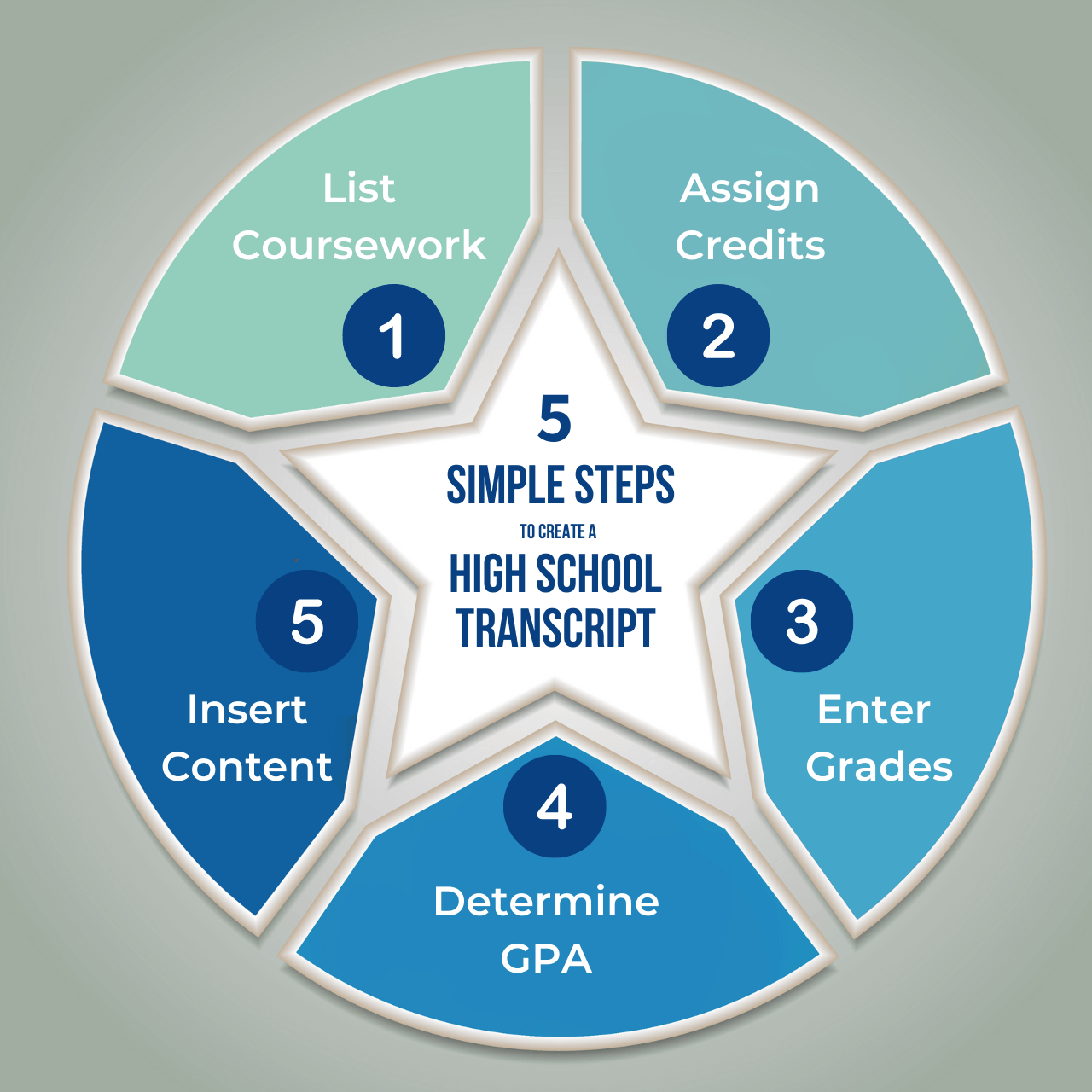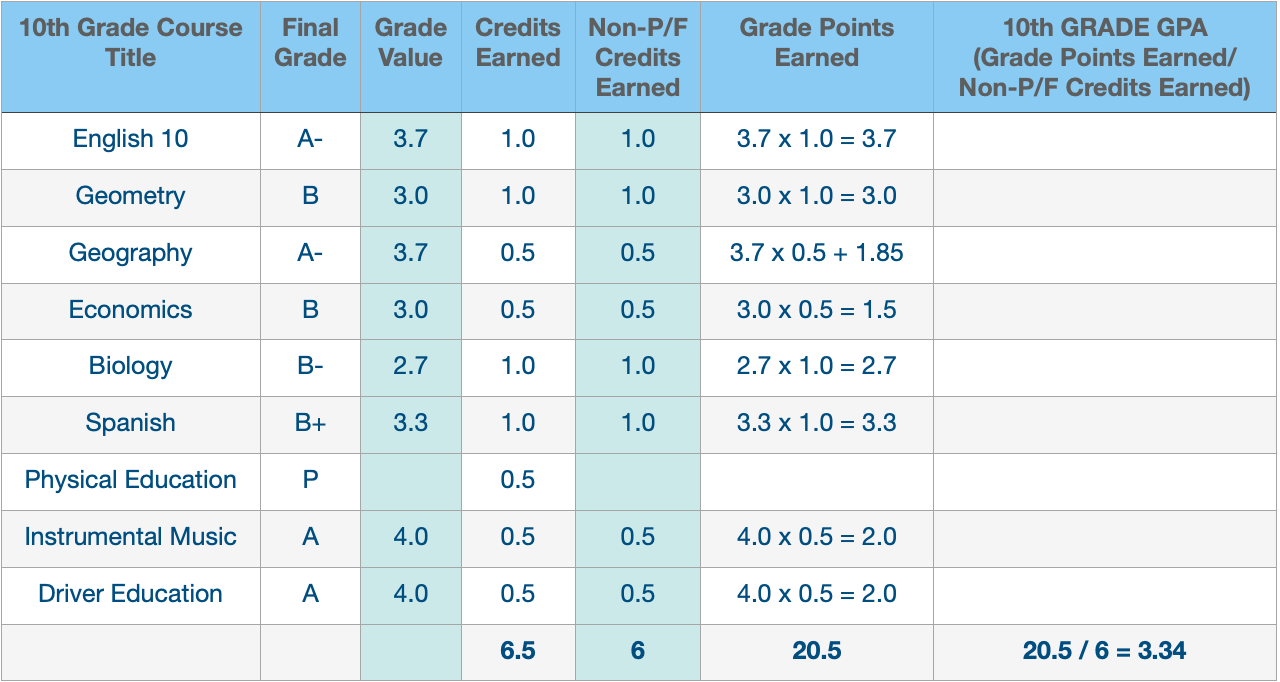Homeschool
Transcript
Guide
Homeschool Transcript Guide
Every homeschool graduate should receive a transcript. What is a transcript? It’s a one-page comprehensive academic summary that includes a listing of the student’s high school and post-secondary coursework, along with grades and credits received for each. You’ll find complete details and step-by-step guidance on obtaining homeschool high school transcripts below.
Why Do Homeschool Students Need a High School Transcript?
Transcripts are often associated with the college admission process, but a surprising number of other entities also request high school transcripts. These include employers, trade schools, military recruiters, apprenticeships programs, and more.
Even if your homeschooled student has no immediate need for a transcript after graduation, a future job promotion opportunity, a work security clearance, or even a decision to attend college later in life may result in the need for one.
Homeschool High School Transcript Sources
There are several ways to obtain a transcript for a homeschooled high school student:
- You can design and publish your own transcript.
- You can pay for a transcript service or software.
- You can enroll your student in an accredited umbrella school, correspondence school, or oversight program that provides transcripts as part of its services.
A majority of homeschooling parents use the first or second options.
Transcript Contents
Most high school transcripts include these basic contents:
- student and school information
- student graduation date
- courses completed, grades received, and credits earned
- total credits and overall grade point average (GPA)
- grading scale used (optional)
- PSAT, SAT, &/or ACT scores (optional)
- a brief list of the student’s awards, honors, leadership positions, volunteer experience, etc. (optional)
- parent certifying signature and date
You can creatively name your homeschool and include that on the transcript.
The student graduation date is not necessarily the date you award a diploma or attend a graduation ceremony. Rather, it’s the date upon which your student completes the coursework you have required for graduation from your homeschool.
If a transcript is requested before your student has graduated, you will note an anticipated graduation date. You can also list courses that are in progress, without final grades and without including them in grade point calculations.
Each time your student’s transcript is requested, you will sign it, either in ink or digitally, and provide the date it was certified. (This date does not, of course, need to be the same as the student graduation date.)
Whether you create your own custom high school transcript using a word processing program or use a downloaded transcript template, you’ll want the final product to look polished and professional.

Transcript Preparations
Start by sitting down with your student, ideally before starting high school, to set up an academic plan and target graduation requirements.
Your state’s homeschool law may govern the subject areas you are required to teach. Check with your state homeschool organization for guidance.
It is not necessary to comply with or refer to the public school graduation requirements in your state, but some parents find those helpful when deciding upon courses to include in their student’s four-year high school plans. You can find the public school requirements on your state department of education’s website.
And, if your goal is to make your student’s transcript reflect those of public school students in your state, you might also check the coursework credit system that your particular state department of education dictates. Most states use a system that assigns one credit for a year-long course, with targets of 20-28 credits for high school graduation. However, some states (like New Jersey, California, Indiana, and Idaho) have unique credit systems.
For the general purposes of this guide, we’ll use the most common system.
As you plot a four-year plan in preparation for creating a transcript, consider your student’s future aspirations and goals. A college-bound student will need a different academic plan and target graduation requirements than one who does not plan to attend college.
Here are some suggestions to help you get started, but, of course, each 4-year plan will be unique to your location and your student’s needs.


Five Simple Steps to Create a High School Transcript
Follow these steps to create a complete and effective transcript.


Step 1: List and Apply Names to Your Student’s Completed High School Coursework
This step will, of course, be fairly simple if you’ve been logging year-to-year records.
You may include on this list high school level courses that your student completed before ninth grade. You should also enter post-secondary courses that your student completed while in high school, including college, honors, and/or Advanced Placement® courses.
Most transcripts are arranged by grade level and school year. However, you can also consider a presentation organized by subject.
Even though course names can be based upon the curriculum you used, but they should clearly identify the course content, not just mimic textbook titles.
Step 2: Assign Credits for Your Student’s Completed High School Coursework
Your next step will be to allot credits for your student’s courses.
As noted above, a general rule is that a year-long course is worth one credit and a semester-long course is worth ½ credit. However, keep in mind that some state education departments use different systems.
Also, because home education often includes non-traditional coursework, alternative systems can be used when assigning credits. A helpful guideline is the Carnegie Unit, which assigns one credit for at least 120 hours of instruction and ½ credit for at least 60 hours of instruction.
If your student has completed a significant project or accomplishment that qualifies as an academic achievement, you can use the Carnegie Unit to apply credit value to it.

Here’s an example: Perhaps your son initiated a lawn mowing service. In that effort, he researched and investigated business models and purchased or rented equipment. He also designed invoices, set up a record system, and created a promotional outreach. If the background work in this project (not the lawn mowing labor itself) qualifies as an educational effort, list it on the transcript as “Entrepreneurship Studies.” Use the Carnegie Unit to determine credit value.
Another example might be your daughter’s participation in the local community choir. If she spent at least 60 hours rehearsing and performing under the instruction of the choir director, that could qualify as a ½ credit of choral music.
Most non-traditional courses like this will be listed in the fine arts, physical education, or electives section on your student’s transcript.
Use discretion, however, and curb your impulses to clutter the transcript with too many of this type of entry.
Step 3: Enter Grades for Your Student’s Completed High School Coursework
Course grades will often be determined by the curricula you use. In most cases, they will be based upon daily work and scores on quizzes and tests.
How would you assign a grade for non-traditional coursework like the outside-the-box examples provided above? You can set up a simple scale of tasks within the effort that needs to be completed to receive each increasingly higher grade for the course.
You can include pass/fail courses, but those courses will not be included when calculating the grade point averages described in Step 4.



Step 4: Figure Your Student’s Yearly and Total Overall Grade Point Averages
Next, you will calculate grade point averages. It’s not that difficult. Just follow these simple steps.
When figuring a grade point average, you need to start by converting the letter course grades you entered into number equivalents.
If you’re using a strict letter grade system, it will look like this:
A = 4 points
B = 3 points
C = 2 points
D = 1 point
F = 0 points
P/F = 0 points
A+ = 4.3
B+ = 3.3
C+ = 2.3
D+ = 1.3
A = 4.0
B = 3.0
C = 2.0
D = 1.0
A- = 3.7
B- = 2.7
C- = 1.7
D- = 0.7
F = 0.0
P/F = 0.0

Remember that, when you are calculating grade point averages, only courses that received grade value (not pass/fail courses) are included.
Take the course grade value times the credit value to determine the course grade point. When you have the grade points for all of the courses, add them all up and divide by the total number of credits earned during that school year. The resulting number will be the grade point average for that school year.
The cumulative or overall grade point is not necessarily a simple average of the yearly GPAs. Instead, you should add up all of the grade points earned and divide that by the total number of non-P/F credits earned.
Here’s an example to help you understand the process:

There are some additional considerations in this process if your student earned credits for honors courses and Advanced Placement® (AP) courses. In general, you will add 0.5 to each grade value for an honors course (e.g. 4.5 for an A) and you will add 1.0 to each grade value for an AP course (e.g. 5.0 for an A).

Step 5: Insert Content into a High School Transcript Form
Your transcript should be organized, easy-to-read, and presented in a format familiar to college admissions staff or potential employers.
Many colleges now require a “syllabus” addendum with descriptions of each core course. If you used a packaged curriculum or a textbook, a brief description of these will be adequate.
Most homeschool state organizations offer transcript samples. General homeschool high school transcript forms are available as free template downloads. Here’s just one example from donnayoung.org. If you are a member of Home School Legal Defense Association, you can find free high school transcript template forms on their member portal. HSLDA also offers a subscription to a transcription service.
You can create an accurate and effective transcript!
Follow the guidance and steps provided here and you’ll discover that you can, indeed, produce a high school transcript for your homeschooled student.
This final product will equip and serve your homeschool graduate well into the future.
Would you like to save this info for future reference?
Download a printable copy today!

Julie Naberhaus
Homeschool Iowa
Julie and Garry were founding Homeschool Iowa board members.
